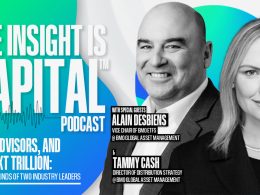The Cart's in Front of the Horse
by Guy Haselmann, Director, Capital Markets Strategy, Scotiabank GBM
· Markets have overreacted to Yellen’s speech. I do not believe that she was as emphatically dovish as the press or euphoric markets heralded. The flood into risk assets this week will soon prove to be a huge mistake over the next few weeks and months. I beseech investors to write down yesterday’s closing prices in various markets and compare them to month-end prices in each month for the rest of the year. I bet investors will look back at this week as a mistake and take heed of the terrible upside versus downside potential at current valuations.
o In the near future, I bet (materially): the dollar will be higher; the SPX, oil, and high grade indexes will be lower; the Treasury yield curve will be flatter; and, the UST/Bund spread will be narrower.
· In my opinion, Yellen was merely trying to bring clarity after the confusion that arose from the March meeting and press conference. Her speech was not intended to paint a ‘more dovish’ Fed, but rather to try to communicate what the Fed has been saying for quite some time. I will outline this in a minute. The confusion is because her words follow shifts in the useless ‘dot plot’ and because the FOMC’s ‘never-defined’ data dependency had seemingly reached its goals without an accompanied rate hike.
· Yellen’s speech basically said that the economy and inflation could go up or down, and the Fed will react accordingly. She added that since rates were so low that there is an asymmetrical skew, whereby the Fed has more ammunition to hike than to cut. Due to this skew, the FOMC must be cautious and gradual. She said the world is an uncertain place, hence, great caution is particularly prudent. There is nothing new here relative to prior messages.
· Many believe that Chair Yellen was wrestling the dovish message back away from some recent hawkish comments made by other FOMC members. I disagree. It seems more like the market is hearing what it wants to believe. Nothing new was ascertained about Fed thinking, however, a few important market related factors were witnessed.
· We learned that market direction continues to be driven by ‘herding’ investors who believe that more (or longer periods of) accommodation will lift asset prices to ever-higher levels. This strategy is becoming ever-more dangerous. Higher prices mean lower future returns. Higher prices require greater amounts of economic reflation to justify valuations. Greater amounts of accommodation are required to lift prices even further, but problematically there is little effective monetary or fiscal slack left to do so.
· Markets remain dangerously dependent on aggressive central bank involvement. The Fed and other central banks must be ‘gradual’ because a quick exit plan would certainly wreak havoc on financial markets. FOMC members admit there could be some “bumpiness”, but I suspect that secretly they (rightly) fear much greater market fallout.
· It makes no sense to me that FOMC members constantly say that they need to have confidence that their 2% inflation objective will be met before lifting rates. This statement does not question why monetary policy has failed to achieve the expected levels of growth and inflation. This statement fully relies on the premise that monetary accommodation is what is necessary to achieve 2% inflation and full employment.
· Isn’t it possible that the globalization, the internet, aging societies, and massive indebtedness could prevent central banks from further progress toward higher goals and economic performance? Isn’t it possible that low and negative rates might be counterproductive to such goals (see my March 8 note, “The H-Curve)?
· Unfortunately, Fed officials speak like they can achieve economic nirvana, or at least do more than is realistic. It seems to me that precisely pinpointing exact economic targets for the US’ $18 trillion global economy is micro-management at its extreme. There is an unhealthy hubris in over-promising what can be delivered. Last week, Philadelphia Fed President Harker refreshingly stated that the Fed should have humility in the limits of monetary policy.
· The intention of recent central bank policies has been to lift asset prices and encourage risk seeking. I fail to see how lowering rates below a certain level, or how buying many trillions of dollars of assets, properly helps the real economy. It seems like the cart is being put in front of the horse. If the real economy is strong then asset prices should rise to the appropriate level, not vice versa.
· I doubt there were potential borrowers who waited to borrow once rates hit zero, because they were waiting to do better with negative rates. On the contrary, near-zero and negative rates crush pension, insurance and banking models. They hurt small savers and cause them to retrench even further. They damage capital markets and encourage speculation. They increase uncertainty, harming the willingness for investment in the capital projects necessary for long-run improvement in the real economy.
· Investing today is more about psychology than valuation. ‘Lower for longer’ may not ‘buy time’. On the contrary, it risks financial instability and complicates central bank exit strategies. For most companies, revenue and profit growth will be elusive. Markets have entered a dangerous game of chicken. Investors should worry less about missing the upside or in finding capital gains, and worry more about limiting capital loss.
· “How do you tell if you’ve run out of invisible ink?” – Steven Wright
Regards,
Guy
Guy Haselmann | Capital Markets Strategy
▬▬▬▬▬▬▬▬▬▬▬▬▬▬▬▬▬▬▬▬▬▬▬▬▬▬▬
Scotiabank | Global Banking and Markets
250 Vesey Street | New York, NY 10281
T-212.225.6686 | C-917-325-5816
guy.haselmann[at]scotiabank.com
Read/Download the complete report below:
Global Macro Commentary March 30 - Putting the Cart in Front of the Horse
Scotiabank is a business name used by The Bank of Nova Scotia















